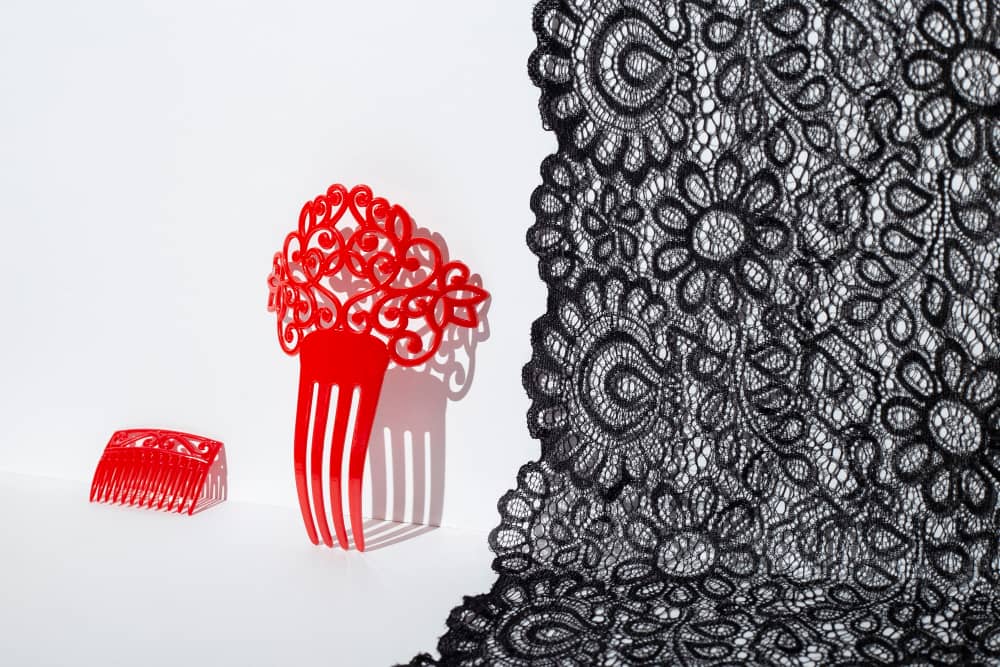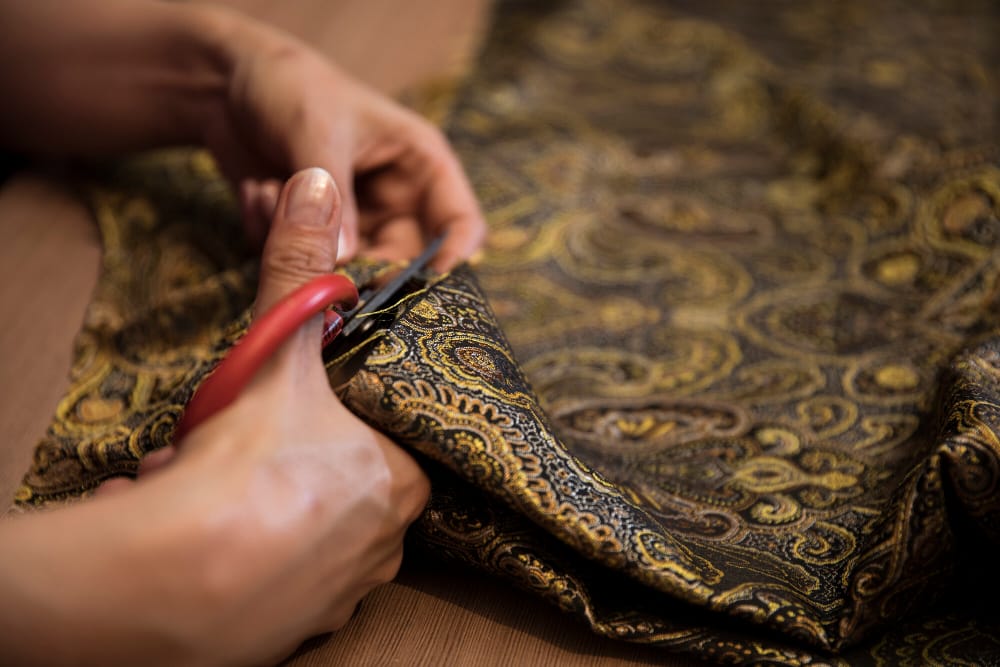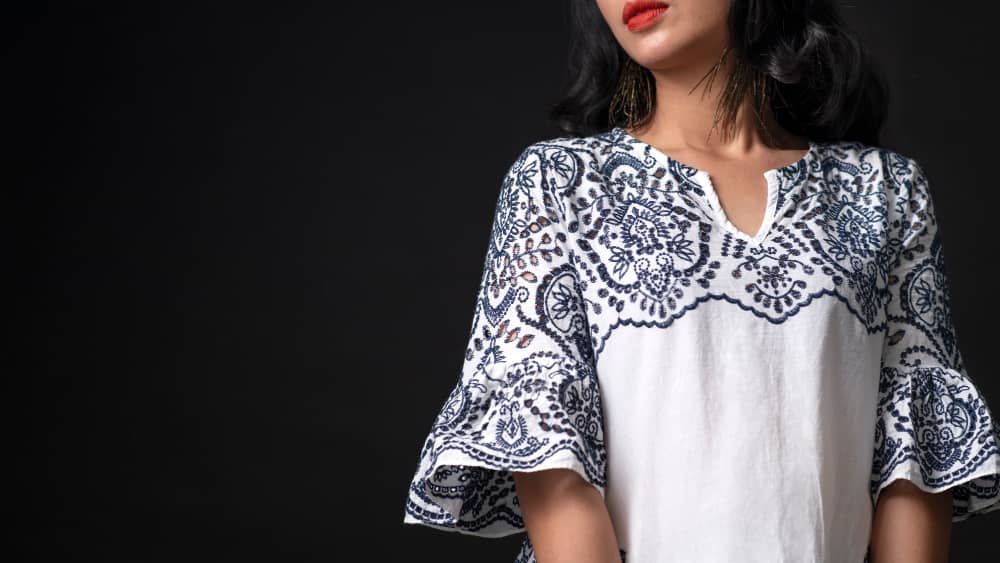Home » Youghal Lace
Youghal Lace: A Prized Possession Through Centuries
Youghal lace, a delicate and intricate form of lacework, has been a prized possession for centuries. Its beauty and craftsmanship have captured the hearts of many, making it a highly sought-after textile. Let’s delve deeper into the rich history and significance of Youghal lace.

The Origins and History of Youghal Lace
Youghal lace, tracing its roots back to the picturesque coastal town of Youghal in County Cork, Ireland, marks its inception to the late 17th century. This form of lace-making was introduced by Dutch immigrants who settled in the region, blending their native lace-making skills with local traditions. These families were instrumental in laying the foundations of what would become a renowned lace-making industry, imbued with a rich cultural heritage.
The development of Youghal lace rapidly evolved during the 18th century, flourishing into a significant local industry. Its designs, intricate and inspired by the natural world around them – including florals, foliage, and vine motifs – became emblematic of the lace’s identity. This craftsmanship quickly garnered the admiration of Ireland’s aristocracy, positioning Youghal lace as a coveted adornment for the wealthy and influential.
The production of Youghal lace not only showcased the technical prowess and creative artistry of its lace-makers but also reflected the societal and economic influences of the time. It served as a testament to the community’s resilience and adaptability, embedding itself deeply within the fabric of Irish cultural history. The lace’s intricate patterns and designs continue to tell stories of its rich past, bridging generations through threads of continuity and craft. This historical narrative sets the stage for understanding Youghal lace’s enduring legacy and the significant place it holds within the annals of textile history.
The Artistry and Techniques Behind Youghal Lace
The remarkable artistry and techniques behind Youghal lace underscore its distinction in the realm of textile crafts. This lace variant employs a fusion of needlework practices, prominently needlepoint and crochet, which culminate in the creation of its sophisticated designs. Lace-makers, highly skilled in their craft, dedicate countless hours to producing each piece, manipulating fine threads through minute hooks to achieve the lace’s signature intricate patterns.
A hallmark of Youghal lace is its exceptional raised work, which imparts a three-dimensional aspect to the fabric. This effect is achieved through the meticulous creation of loops and knots that stand out on the lace’s surface, enhancing the design’s depth and texture. The interplay of light and shadow cast by the raised elements contributes significantly to the lace’s distinguished and opulent appearance, setting it apart from other forms of lacework.
Furthermore, the artistry of Youghal lace is not solely about the aesthetic appeal; it also involves a high level of technical skill. The lace-makers’ proficiency in combining different stitches and techniques is vital for bringing the intricate designs to life. Their ability to weave threads into such detailed and delicate patterns without the aid of modern technology is a testament to their mastery and dedication to the craft.
Youghal lace’s enduring charm lies not just in its beauty but also in the complexity and skill required to create it. The dedication of lace-makers to preserve these traditional techniques ensures that each piece of Youghal lace is not only a work of art but a link to a rich cultural heritage.

Youghal Lace in Fashion and Aristocracy
Youghal lace emerged as a beacon of luxury and status, highly esteemed by the upper echelons of society for its refined beauty and exquisite craftsmanship. Its incorporation into the wardrobe of nobility and royalty underscored its prestige, serving as a sartorial hallmark of wealth and sophistication.
In the height of the Victorian era, the allure of Youghal lace transcended the shores of Ireland, capturing the attention of fashion circles globally. Esteemed publications and international exhibitions showcased its elegance, propelling it into the limelight of high society.
It was during this period that Queen Victoria, known for her impeccable taste and influence in fashion, embraced Youghal lace, integrating it into her personal and royal attire. This royal endorsement amplified its desirability amongst the fashion-forward and aristocratic circles, further cementing its status as a symbol of opulence.
The fascination with Youghal lace during this era was not merely a testament to its aesthetic appeal but also to its representation of meticulous handcraftsmanship. It adorned ball gowns, shawls, and accessories, each piece echoing stories of artisanal heritage and painstaking skill. The fabric’s allure was such that it became an essential element of the sophisticated wardrobe, a treasure to be flaunted at the grandest of occasions.
The integration of Youghal lace into the fabric of fashion and aristocracy during the Victorian era underscores a pivotal chapter in its history. Its legacy, marked by royal patronage and fashion acclaim, highlights the enduring appeal and cultural significance of this exquisite craft.

Preserving the Legacy: Youghal Lace Today
In the face of modern challenges, the legacy of Youghal lace is meticulously upheld by a cadre of devoted artisans and connoisseurs who are passionate about its revival and propagation. These guardians of tradition are engaged in initiatives that aim to rekindle interest in this age-old craft, running workshops, exhibitions, and educational programmes that spotlight the intricate beauty and historical importance of Youghal lace. Their efforts are not only about preserving a unique skill but also about nurturing a sense of community among lace-makers, enthusiasts, and newcomers eager to learn the art.
Artisanal groups and heritage organisations are at the forefront of these endeavours, leveraging digital tools and social media to reach a global audience. Through their online platforms, they share tutorials, stories of heritage, and insights into the lace-making process, thus bridging the gap between the past and present. The increased visibility has sparked a renewed interest in Youghal lace, attracting a diverse following from around the world.
Moreover, contemporary designers are finding innovative ways to incorporate Youghal lace into modern fashion and décor, ensuring its relevance in today’s aesthetic landscape. These collaborations are vital in demonstrating the lace’s versatility and potential for adaptation, appealing to both traditionalists and those with a modern sensibility.
By melding tradition with innovation, the community surrounding Youghal lace is setting a strong foundation for its future. Their dedication ensures that this exquisite form of artistry not only survives but flourishes, keeping the flame of Youghal lace’s rich heritage alight for future generations to admire and draw inspiration from.
Owning a Piece of History: Collecting Youghal Lace
For enthusiasts of textile art and historical craftsmanship, collecting Youghal lace represents a unique and rewarding pursuit. This fine textile, with its intricate designs and deep cultural roots, offers collectors a tangible connection to Ireland’s artisanal heritage. Vintage pieces of Youghal lace, each with its own story, can be discovered at antique shops, through auctions, or via online marketplaces, providing a fascinating glimpse into the past.
The act of collecting Youghal lace goes beyond mere acquisition; it is an exercise in preservation and appreciation of exceptional craft. Each piece, whether it be a fragment of a gown, a handkerchief edged with delicate lacework, or an ornate tablecloth, encapsulates the skill and patience of the lace-makers who contributed to its creation. As collectors curate their selections, they also become custodians of this exquisite form of artistry, ensuring its legacy endures.
Incorporating Youghal lace into contemporary life – be it through fashion or as part of interior decor – breathes new life into these historical pieces, allowing their beauty and intricacy to be admired afresh. This practice not only celebrates the aesthetic value of the lace but also highlights its versatility and enduring appeal.
Collecting Youghal lace, therefore, offers a richly rewarding experience, connecting individuals to Ireland’s cultural fabric and the timeless art of lace-making. It stands as a tribute to the past, even as it finds new relevance and appreciation in the present.

The Future of Youghal Lace: Challenges and Opportunities
The path ahead for Youghal lace is one marked by both hurdles and potential. The dwindling number of artisans proficient in its intricate techniques presents a significant challenge, juxtaposed against the backdrop of an era dominated by industrially produced textiles. This threat to its continuity highlights the urgent need for strategies that not only preserve but also revitalise this exquisite form of craftsmanship.
Encouragingly, the digital era offers unparalleled opportunities for Youghal lace to reach a global audience. Platforms such as social media and online marketplaces serve as modern conduits for sharing the beauty and intricacy of this craft, allowing for a broader appreciation and a renewed interest among younger generations. By leveraging technology, the story of Youghal lace can be told in new and engaging ways, ensuring its relevance in contemporary society.
Efforts to sustain and propagate Youghal lace hinge on education and engagement. Initiatives aimed at teaching the art to novices are crucial for its survival, offering hands-on experiences that connect individuals with the rich heritage of lace-making. Similarly, collaborations with contemporary designers can introduce Youghal lace to modern fashion and interiors, demonstrating its adaptability and timeless appeal.
The journey forward for Youghal lace is undoubtedly fraught with challenges, but the opportunities for its resurgence and enduring legacy are abundant. With strategic efforts and collective passion, this historic craft can continue to enchant and inspire, securing its place in the future as much as it has in the past.